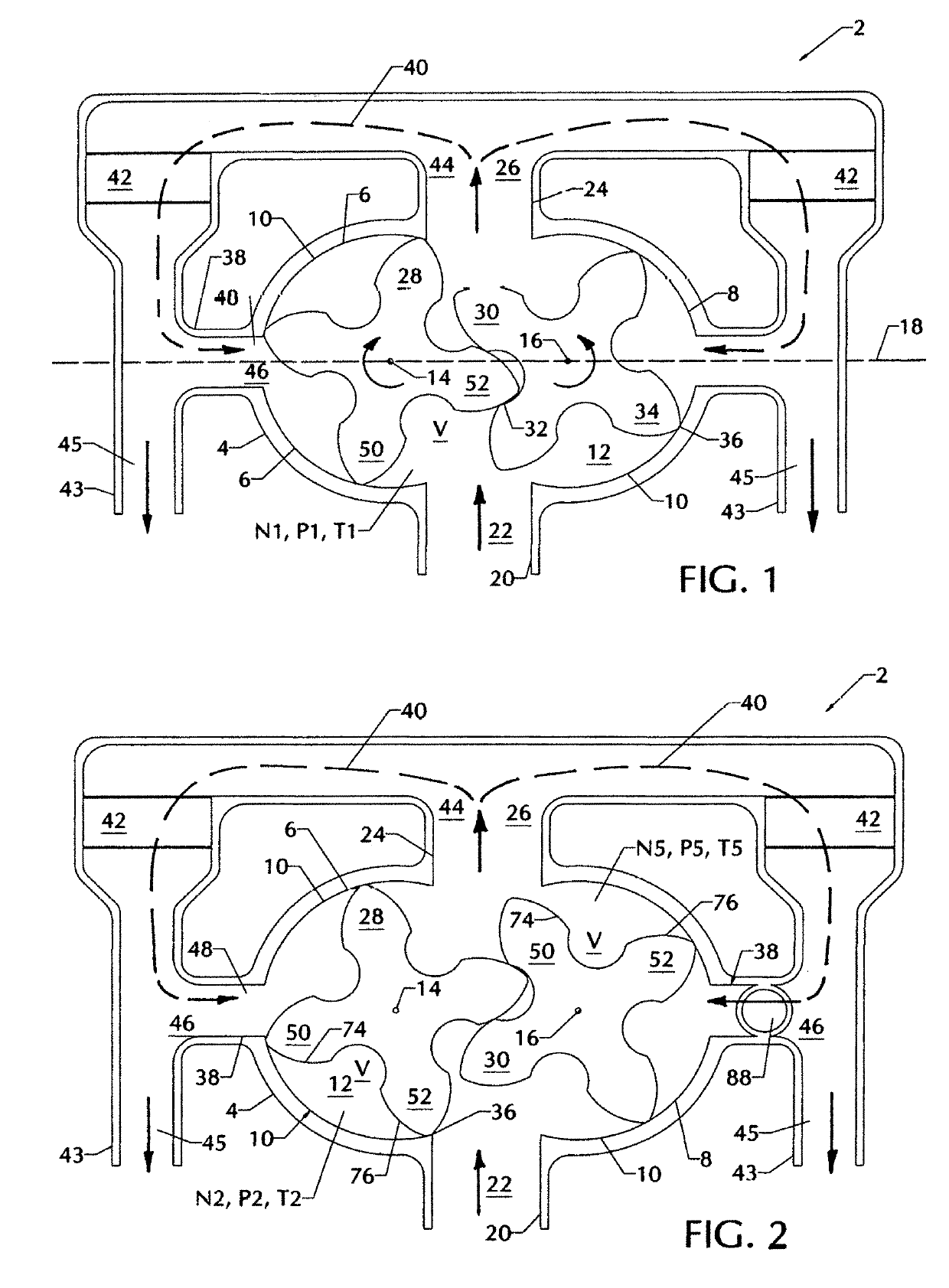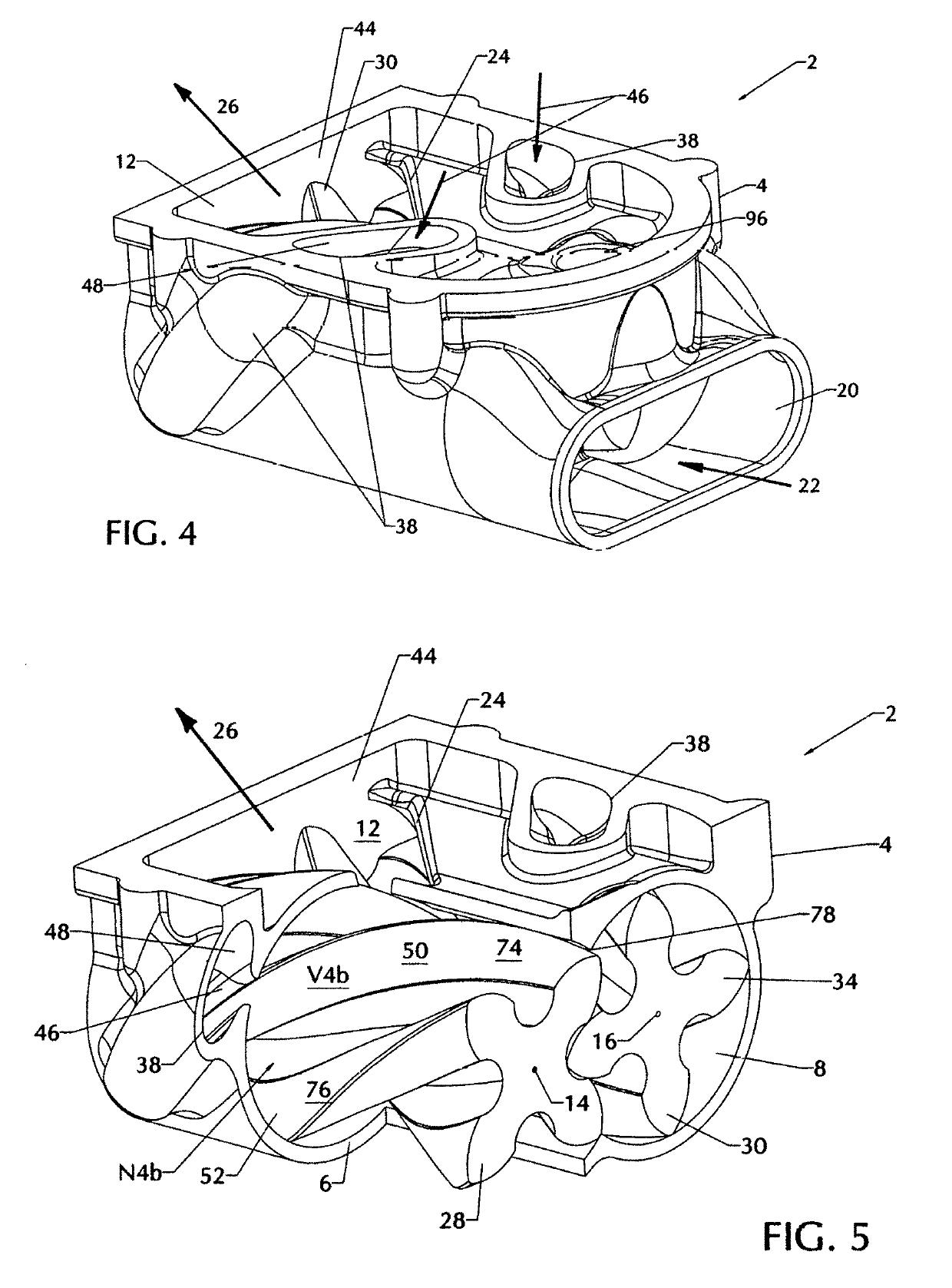Supercharger cooling means
a supercharger and cooling means technology, applied in the direction of engine cooling apparatus, combustion engines, machines/engines, etc., can solve the problems of limited supercharger boost pressure, no cooling benefits, no cooling benefits, etc., and achieve the effect of lower operating temperature and higher operating pressure capability
- Summary
- Abstract
- Description
- Claims
- Application Information
AI Technical Summary
Benefits of technology
Problems solved by technology
Method used
Image
Examples
Embodiment Construction
[0027]FIGS. 1, 2, 3, 4, 5 and 11 are intended to illustrate a rotary blower or supercharger 2 with cooling means 42 according to the present invention. FIGS. 1, 2 and 3 are similar but show the supercharger lobed rotors 28 and 30 at different rotational positions. FIG. 4 shows a perspective view of a portion of the supercharger according to the present invention. FIG. 5 is similar to FIG. 4, but shows a partial cutaway view to better show the cool air recirculation port 38 according to the present invention.
[0028]Rotary blower or supercharger 2 includes a housing assembly 4 defining first 6 and second 8 transversely overlapping cylindrical chambers having internal cylindrical wall surfaces 10 and end wall surfaces 12. Chamber 6 has a first central axis 14, and chamber 8 has a second central axis 16. First central axis 14 and second central axis 16 are spaced apart and parallel, and lie in a common plane 18. The housing 4 defines an inlet port 20 for the inflow of an inlet gas 22, an...
PUM
 Login to View More
Login to View More Abstract
Description
Claims
Application Information
 Login to View More
Login to View More - R&D
- Intellectual Property
- Life Sciences
- Materials
- Tech Scout
- Unparalleled Data Quality
- Higher Quality Content
- 60% Fewer Hallucinations
Browse by: Latest US Patents, China's latest patents, Technical Efficacy Thesaurus, Application Domain, Technology Topic, Popular Technical Reports.
© 2025 PatSnap. All rights reserved.Legal|Privacy policy|Modern Slavery Act Transparency Statement|Sitemap|About US| Contact US: help@patsnap.com



